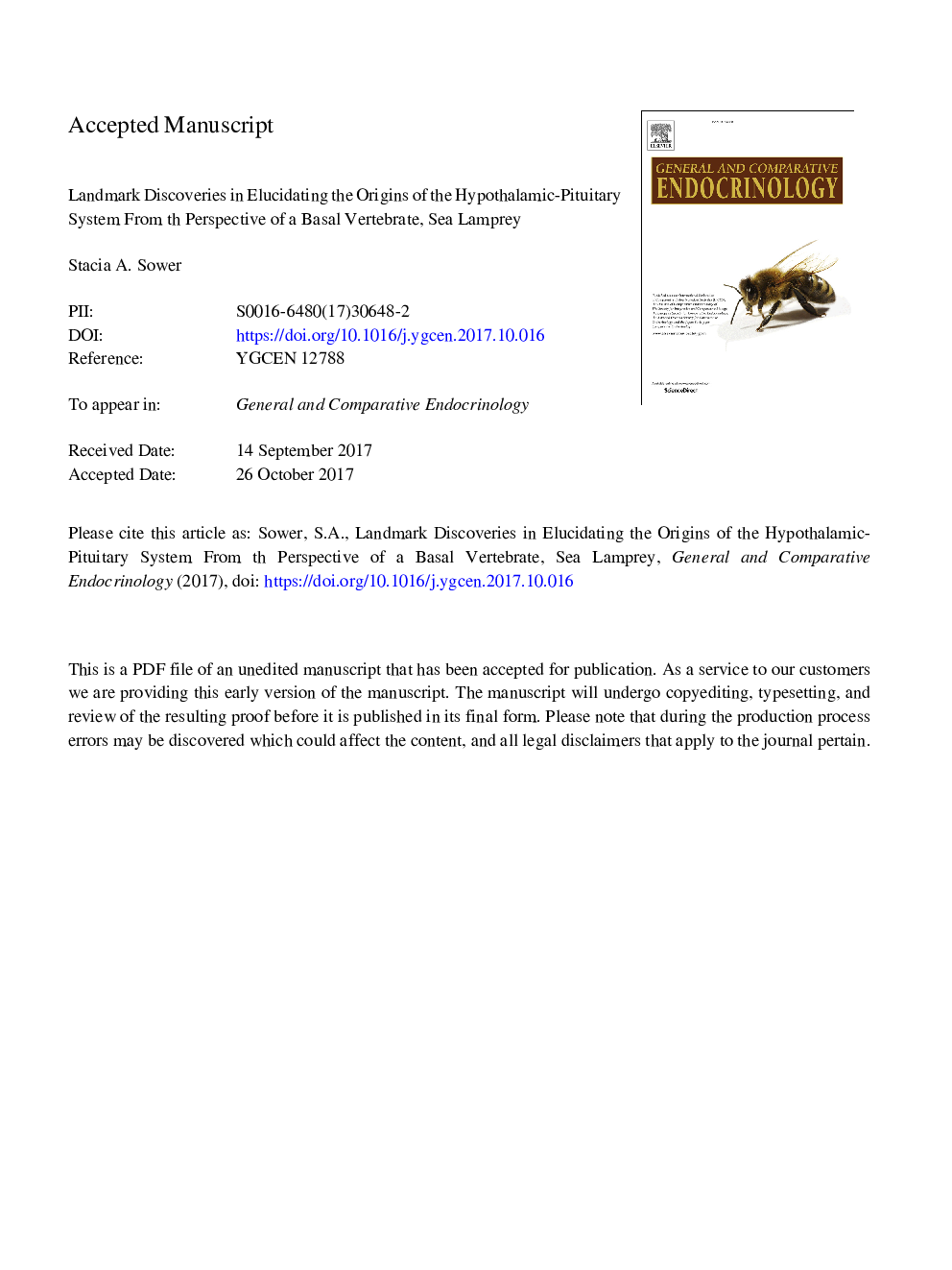| Article ID | Journal | Published Year | Pages | File Type |
|---|---|---|---|---|
| 8630804 | General and Comparative Endocrinology | 2018 | 43 Pages |
Abstract
The hypothalamic-pituitary (HP) system, which is specific to vertebrates, is considered to be an evolutionary innovation that emerged prior to or during the differentiation of the ancestral jawless vertebrates (agnathans) leading to the neuroendocrine control of many complex functions. Along with hagfish, lampreys represent the oldest lineage of vertebrates, agnathans (jawless fish). This review will highlight our discoveries of the major components of the lamprey HP axis. Generally, gnathostomes (jawed vertebrates) have one or two hypothalamic gonadotropin-releasing hormones (GnRH) while lampreys have three hypothalamic GnRHs. GnRH(s) regulate reproduction in all vertebrates via the pituitary. In gnathostomes, there are three classical pituitary glycoprotein hormones (luteinizing hormone, LH; follicle stimulating hormone, FSH; and thyrotropin, TSH) interacting specifically with three receptors, LH-R, FSH-R, and TSH-R, respectively. In general, FSH and LH regulate gonadal activity and TSH regulates thyroidal activity. In contrast to gnathostomes, we propose that lampreys only have two heterodimeric pituitary glycoprotein hormones, lamprey glycoprotein hormone (lGpH) and thyrostimulin, and two lamprey glycoprotein hormone receptors (lGpH-R I and -R II). Our existing data also suggest the existence of a primitive, overlapping yet functional hypothalamic-pituitary-gonadal (HPG) and HP-thyroidal (HPT) endocrine systems in lampreys. The study of basal vertebrates provides promising models for understanding the evolution of the hypothalamic-pituitary-thyroidal and gonadal axes in vertebrates. We hypothesize that the glycoprotein hormone/glycoprotein hormone receptor systems emerged as a link between the neuroendocrine and peripheral control levels during the early stages of gnathostome divergence. Our discovery of a functional HPG axis in lamprey has provided important clues for understanding the forces that ensured a common organization of the hypothalamus and pituitary as essential regulatory systems in all vertebrates. This paper will provide a brief snapshot of my discoveries, collaborations and latest findings including phylogenomic analyses on the origins, co-evolution and divergence of ligand and receptor protein families from the perspective of the lamprey hypothalamic-pituitary system.
Keywords
Related Topics
Life Sciences
Biochemistry, Genetics and Molecular Biology
Endocrinology
Authors
Stacia A. Sower,
